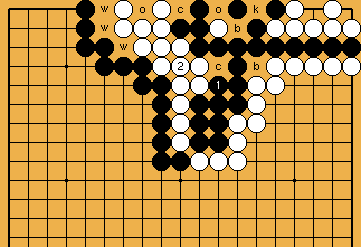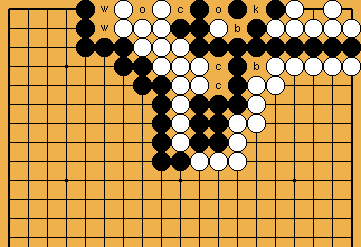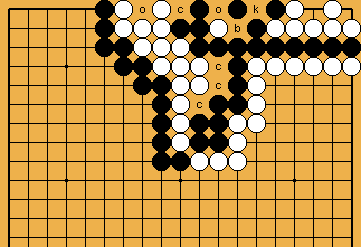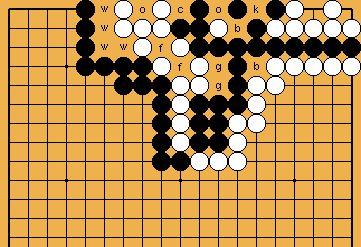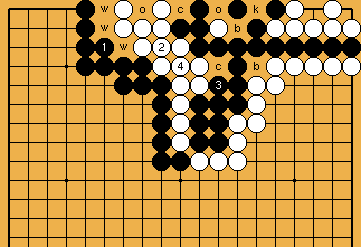About Ko in a Semeai Between
Two One-Eyed Groups (2012)
[ Larger Eye for Black ]
|
EX = 2: |
|
|
|
|
|
|
|
EX = 2 / -f: |
|
|
|
The number of Black's ko-threats needed to win - from here on - is t = ( Filling in her first false eye has proven advantageous for White. |
|
EX = 2 / -c -f: Please note that - in "real life" - this exchange would be equivalent to Black losing a move. |
|
The number of Black's ko-threats needed to win is t = ( However, White's group has six liberties left, so there will be no ko. In the problem, White will choose the semeai against Black's lower right corner, so winning the game unconditionally. So Black should have given priority to occupying outside liberties. |
|
EX = 2 / -c -2f: t = ( |
|
EX = 2 / -2f: t = |
|
EX = 2 / -c: |
|
The number of Black's ko-threats needed to win is t = ( Again, we got a clear sign that Black should think twice before occupying shared liberties too early (i.e. as long as at least two outside liberties are available). |
|
Conclusion: Filling in her first false eye is advantageous for White. At least, this move will not do any harm. However, additionally filling in her second false eye may be a White mistake, if this move is played unforced (i.e. there are two many shared liberties of her lower chain left). Black should refrain from occupying shared liberties, as long as these moves do not force White to fill in her false eyes (and cannot also be used as ko-threats), and as long as there are at least two White outside liberties left. | |
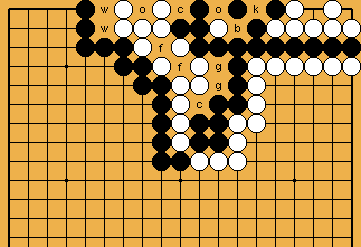
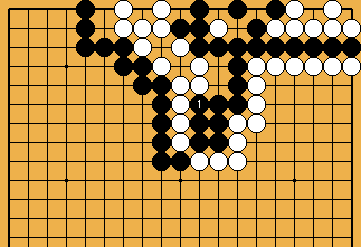
 :
: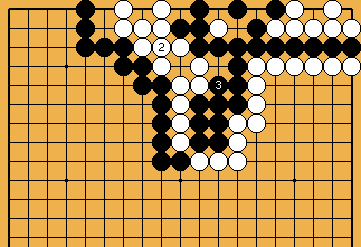
 :
: -points.
-points.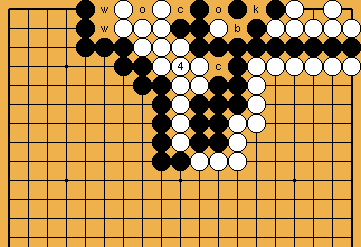
 :
: +
+  ) - 1 = 3 only. The
) - 1 = 3 only. The 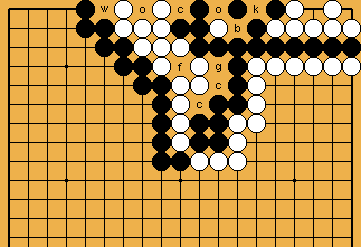
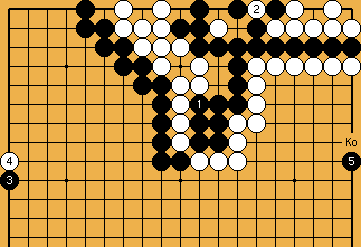
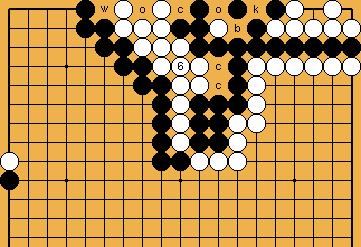
 :
: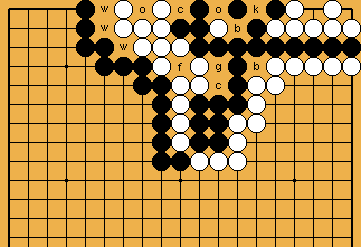
 -liberty and two White
-liberty and two White 